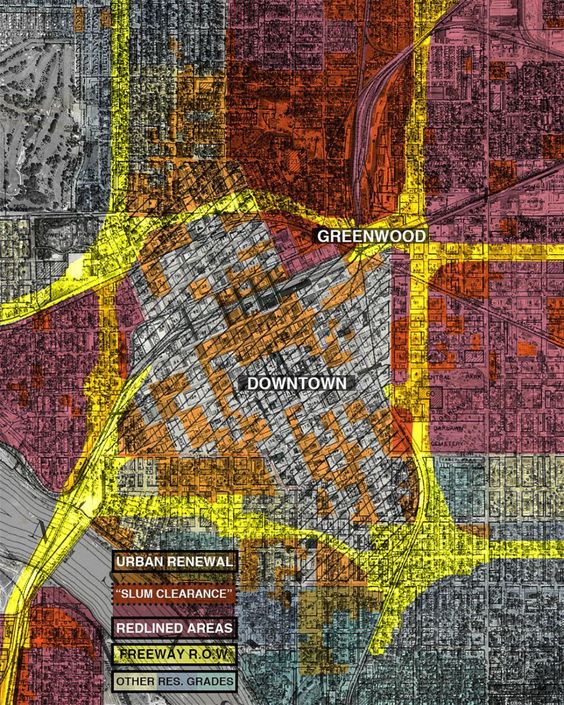|
Listen to this article here
Getting your Trinity Audio player ready...
|
GREENWOOD Dist.–It’s no secret that Black communities impacted by racial segregation have long faced disparities in quality of life, but a new study shows the deadly impact formerly redlined communities have on the residents who reside there.
Black adults who live in zip codes that were formerly redlined by the U.S. banks are 8% more likely to develop heart failure than Black Americans in non-redlined areas, according to a study published Monday in the American Heart Association’s scientific journal Circulation.
Redlining refers to a racist practice beginning in the 1930s in which U.S. banks would deny loans, insurance and other services to communities with heavily Black populations. The practice was banned in the 1960s during the Civil Rights Movement, yet the recent study in Circulation proves the negative effects continue to linger.

Redlined, now flatlined: Heart failure risk increases decades after racist policies
“Historical redlining is associated with an increased risk of HF [heart failure] among Black patients,” the study found after reviewing the cases of over 2 million people, including 801,452 Black Americans.
Notably, the study also found that, “Among White beneficiaries, redlining was associated with a lower risk of HF after adjustment for age, sex, and comorbidities.”
The study stands in stark contrast to the comments from Tulsa Mayor G.T. Bynum, a descendant of slave owners who recently praised the decision from Tulsa County District Judge Caroline Wall to dismiss the 1921 Race Massacre lawsuit for the three last known living survivors on July 7.
In supporting the denial of justice for “Mother” Viola Ford Fletcher, 109, “Mother” Lessie Benningfield Randle, 108, and “Uncle” Hughes Van Ellis, 102, Mayor Bynum said he “appreciated” the judge’s decision.
“I completely reject the notion that the citizens of Tulsa have benefited from the 1921 Tulsa Race Massacre,” Bynum told Tulsa World. “I do not think that is true.”
Meanwhile, the city’s own data shows residents of historically Black North Tulsa live almost three times shorter after retirement than residents of South Tulsa. The findings come after a city-sanctioned, white supremacist massacre in 1921, redlining in the 1930s and urban renewal efforts in the 1950s and 60s that cut through the once wealthiest Black community of Greenwood, home to the original Black Wall Street.
“The strongest relationship between redlining and HF [was] observed in the most socioeconomically disadvantaged communities,” the study found.
Study adds weight to reparations demands
For supporters of reparations, the study further proves the United States owes Black descendants of formerly enslaved Freedmen financial restitution.
Kamilah Moore, Esq. is the chair of California’s Task Force to Study and Develop Reparation Proposals for African Americans. In its final report, released on June 29, the task force listed over 100 policy recommendations, along with calculations for determining financial compensation. The recommendations included remedies for the decades of racist housing policies, such as redlining.
“In its final report, the California Reparations Task Force urges lawmakers to: 1) compensate descendants of American slaves/freedmen for health harms, and 2) offer property tax relief to homeowners of the same class, living in historically redlined neighborhoods,” Moore, Esq. posted on Twitter.



Comments are closed.